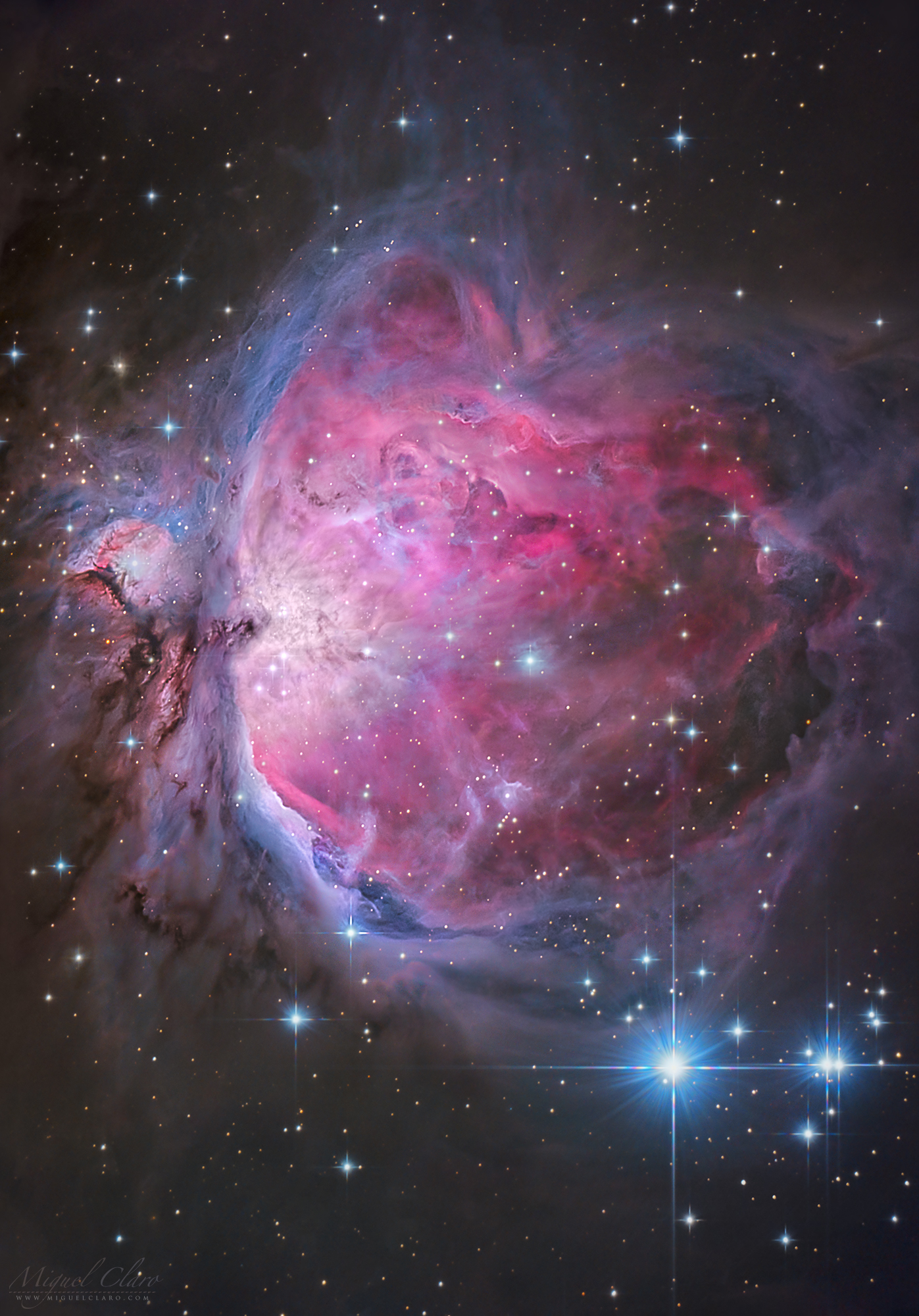Gorgeous Orion Nebula Glows in Stunning Red and Blue Light (Photo)
Deep-space nebula, or cosmic cotton candy?

Miguel Claro is a professional photographer, author and science communicator based in Lisbon, Portugal, who creates spectacular images of the night sky. As a European Southern Observatory photo ambassador, a member of The World At Night and the official astrophotographer of the Dark Sky Alqueva Reserve, he specializes in astronomical "Skyscapes" that connect Earth and the night sky. Join Miguel here as he takes us through his photograph "The Great Orion Nebula: A Colorful Show in Visible Light."
Captured in the visible light spectrum, this deep-space image paints a sharp and colorful picture of the great Orion Nebula.
Also known as Messier 42 (M42), the Orion Nebula spans about 24 light-years across and is part of the much larger Orion Molecular Cloud Complex. The nebula is situated in the Milky Way some 1,350 light-years away from Earth in the constellation of Orion, the hunter, and it can be seen with the naked eye south of Orion's belt.
Colorful clouds of cosmic dust and gas that make up the Orion Nebula fuel the formation of new stars. This stellar nursery is "the closest large star-forming region to Earth," which is why the nebula has "a relatively bright apparent magnitude of 4," according to NASA.
Related: The Splendor of the Orion Nebula (Photos)
The brightest central part of the nebula is called the "Huygenian region" (named after the 17th-century astronomer Christiaan Huygens). To its left is a dark nebulosity nicknamed the "Fish's Mouth," which separates M43 — another smaller nebula adjacent to M42 on the left side of this image — from the brighter region of M42. Along the outside edges of the cloud formation, we can also find the so-called "wings" of Orion. Shining at the heart of the Orion Nebula is the Trapezium star cluster, named after the four bright stars it contains.
The Orion Nebula gets its reddish hue from hydrogen gas, which is energized by radiation from newborn stars. While the red areas are emitting light, the blue-violet regions in the nebula are reflecting radiation from hot, blue-white O-type stars.
Get the Space.com Newsletter
Breaking space news, the latest updates on rocket launches, skywatching events and more!
To capture this visible-light image, I used a Nikon D810A DSLR astrophotography camera with a GSO 8-inch (20 centimeters) Ritchey-Chrétien astrograph, auto-guided with an EQ6 Pro equatorial mount. The camera was programmed to shoot with an ISO setting of 1600 and an exposure time of 300 seconds. The final composite combines 10 frames of 300 seconds, plus 20 shorter exposures. The total combined time is 65 minutes. Image processing was completed with PixInsight 1.8.5 and Adobe Photoshop CC 2019.
The image was taken from the Cumeada Observatory, headquarters of Dark Sky Alqueva Reserve in Reguengos de Monsaraz, Portugal.
Editor's note: If you have an amazing night-sky photo you'd like to share with us and our news partners for a possible story or image gallery, please contact managing editor Tariq Malik at spacephotos@space.com.
- Zoom Through the Famous Orion Nebula with NASA's Incredible 3D Video
- A Telescope Tracks Orion the Hunter in Starry Time-Lapse Video
- The Fabulous Lives of Nebulas
To see more of Claro's amazing astrophotography, visit his website: www.miguelclaro.com. Follow us @Spacedotcom and on Facebook.
Join our Space Forums to keep talking space on the latest missions, night sky and more! And if you have a news tip, correction or comment, let us know at: community@space.com.










